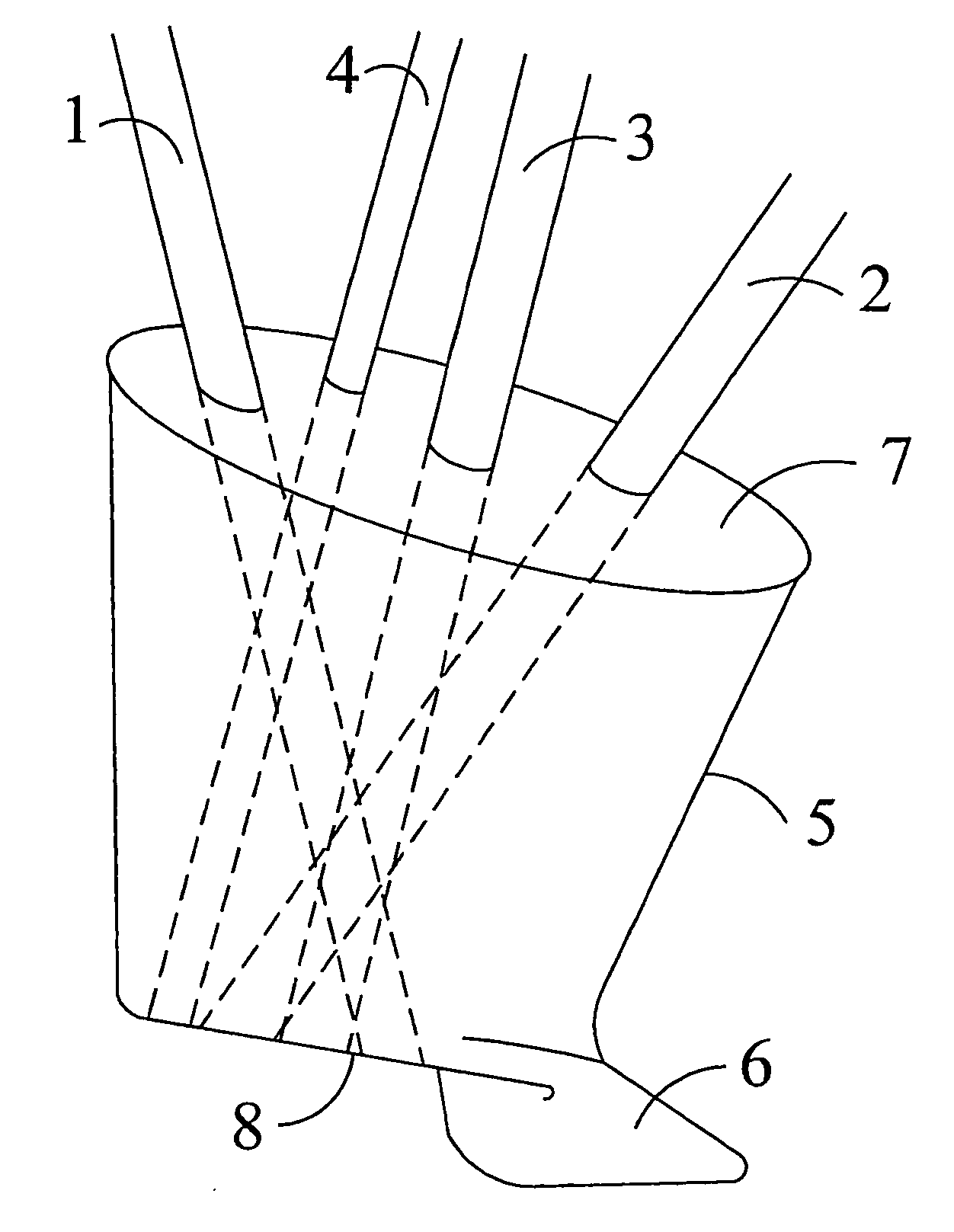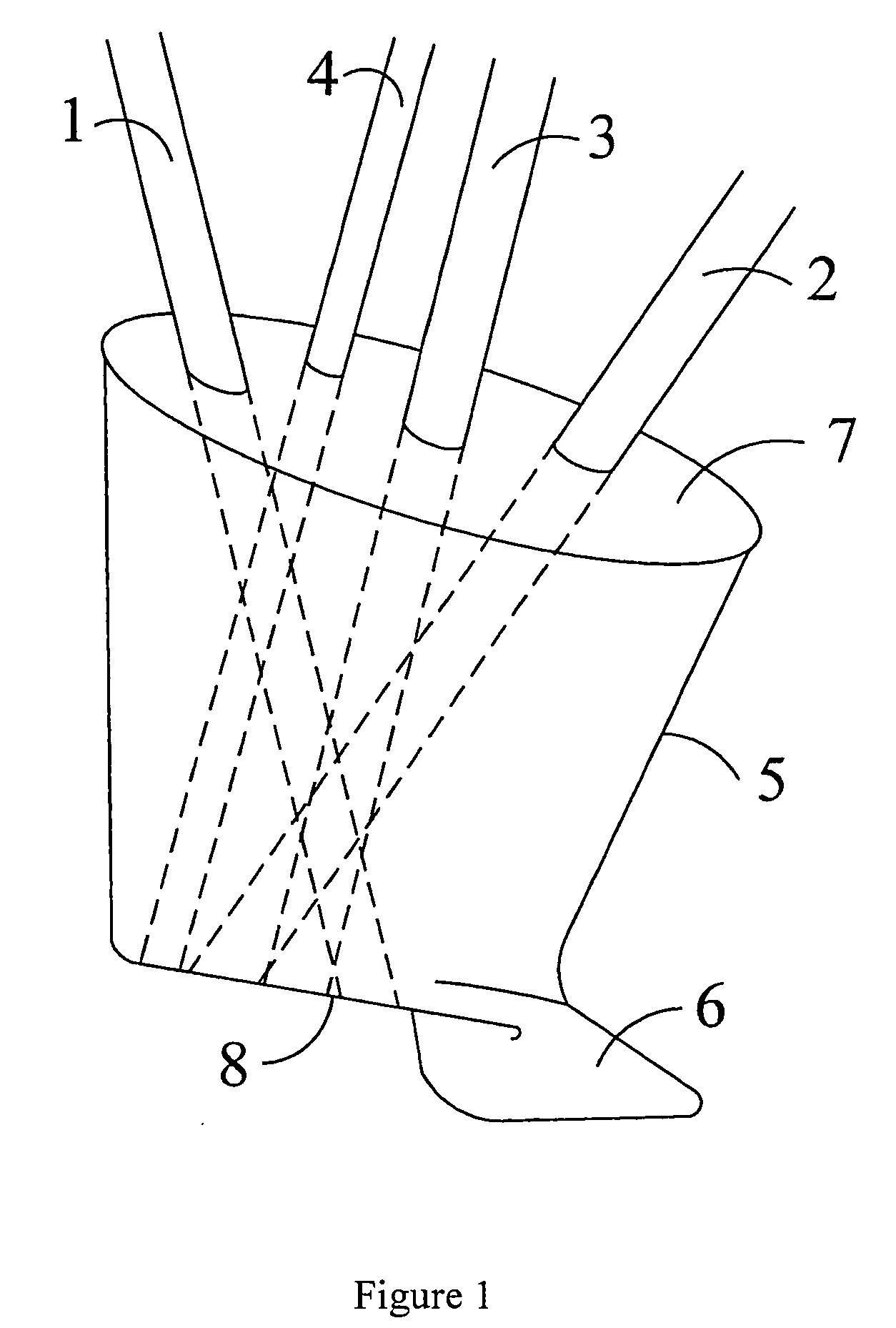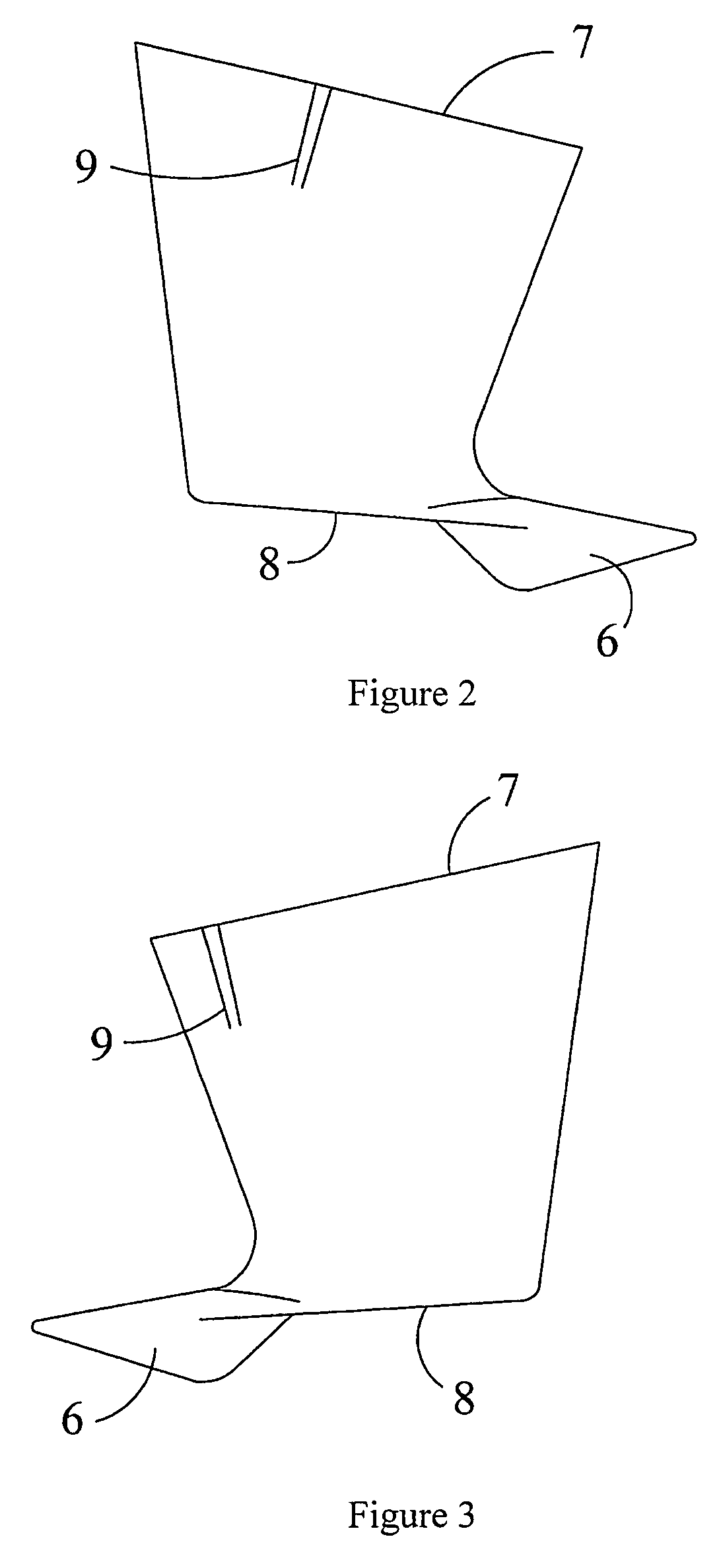Conical laparoscopic apparatus for minimally invasive surgery
a laparoscopic and conical technology, applied in the field of laparoscopic surgery, can solve the problems of limiting the field of view, reducing depth perception, and rarely using multichannel devices, so as to reduce the chance of sealing bumping against one, increase the “fulcrum” (movement of the instrument tip), and remove the chance of sealing bumping
- Summary
- Abstract
- Description
- Claims
- Application Information
AI Technical Summary
Benefits of technology
Problems solved by technology
Method used
Image
Examples
Embodiment Construction
[0043]In reading this disclosure, the reader should understand that the term body flange generally means the entire device used to temporarily seal an incision in a patient. Thus, the body flange would include the body anchor—the section of the device that fits within the abdominal wall and is temporality sutured to the abdominal lining, any passageways extending through the body anchor (both above and below), any seals or other apparatus that is required to form the complete temporary entry closure.
[0044]Turning now to FIG. 1, the improved body anchor is shown as item 5. The overall shape is somewhat like a boot, in that the upper perimeter, 7, and lower perimeter, 8 are elliptical. The anchor stabilizer, 6, extends from the lower perimeter following an axis which passes through the foci of the elliptical lower perimeter, 8. Crisscrossing instrument conduit, 1 and 2 are shown. It should be noted that these conduit need not crisscross to take advantage of the improved body anchor ut...
PUM
 Login to View More
Login to View More Abstract
Description
Claims
Application Information
 Login to View More
Login to View More - R&D
- Intellectual Property
- Life Sciences
- Materials
- Tech Scout
- Unparalleled Data Quality
- Higher Quality Content
- 60% Fewer Hallucinations
Browse by: Latest US Patents, China's latest patents, Technical Efficacy Thesaurus, Application Domain, Technology Topic, Popular Technical Reports.
© 2025 PatSnap. All rights reserved.Legal|Privacy policy|Modern Slavery Act Transparency Statement|Sitemap|About US| Contact US: help@patsnap.com



